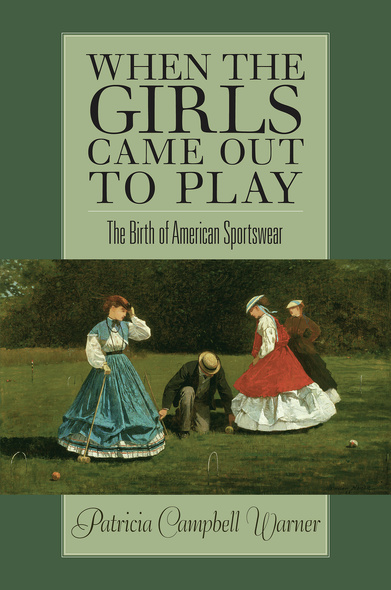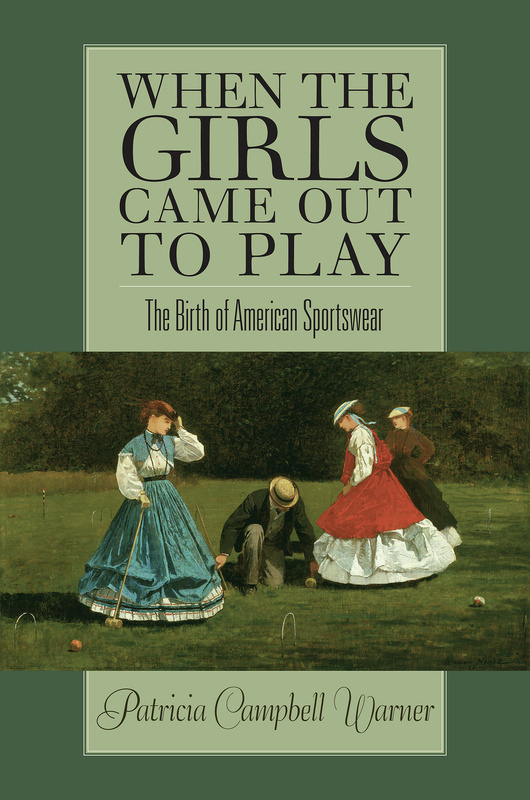When the Girls Came Out to Play
The Birth Of American Sportswear
University of Massachusetts Press
A study of the evolution of American women's clothing, When the Girls Came Out to Play traces the history of modern sportswear as a universal style that broke down traditional gender roles. Patricia Warner shows how this profound cultural shift, which did not reach fruition until World War II, originated during the previous century with the gradual expansion of socially acceptable physical activity for women. Behind this development was a growing interest in sports and exercise that was further nurtured by the establishment of schools of higher education for women.The participation of women in athletic pursuits previously reserved for men began with the relatively genteel sports of croquet and tennis. With the founding of women's colleges, these "ladylike" games were supplemented by more vigorous activities and competitive team sports, from gymnastics to swimming to basketball. At first, Warner points out, women literally had nothing to wear for these activities. Whereas such fashionable attire as corsets, petticoats, hats, and gloves could be worn while playing outdoor lawn games, more strenuous athletic endeavors required less physically restrictive clothing. Even so, change came only gradually, as women's colleges, shielded from public scrutiny and prying male eyes, permitted the adoption of looser, more comfortable apparel for physical education. Many of these new outfits featured trousers, garments considered taboo for women, though they often remained hidden beneath voluminous skirts.
Over time, however, the practicality and versatility of such clothing led to social acceptance, laying the foundation for the emergence of the now ubiquitous yet distinctly American style known as sportswear. Although we take it for granted, Warner observes, this is the first time in the history of the world that such universality has existed in clothing, and it has lasted now for well over half a century—in itself a marvel, considering the speed of fashion change in an era of instant messages and images.
Over time, however, the practicality and versatility of such clothing led to social acceptance, laying the foundation for the emergence of the now ubiquitous yet distinctly American style known as sportswear. Although we take it for granted, Warner observes, this is the first time in the history of the world that such universality has existed in clothing, and it has lasted now for well over half a century—in itself a marvel, considering the speed of fashion change in an era of instant messages and images.
This will be the book on women and sport clothing and will no doubt open the doors for additional research on the topic. . . . Patricia Warner has long been considered the expert in this field and numerous scholars have been anxiously awaiting the publication of this book.'—Gayle V. Fischer, author of Pantaloons and Power:
A Nineteenth-Century Dress Reform in the United States
'Patricia Campbell Warner has completed a compelling and insightful book that poses the question, 'Which came first, the sportswear or the female athlete?' . . . This fine book should be read by interested in the history of women and sports in the nineteenth-century.'—The American Journal of Play
'Warner's book brings together many elements of history, from 'muscular Christianity' to 'rational dress,' to build a convincing argument for why we should accord those dorky gym suits more respect than we may have given them as teenagers.'—UMass Amherst Magazine
'Warner examines a heretofore untapped area of U.S. social history: how informal clothing developed in the 1800s in response to middle-class leisure activities, competitive sports, and attitudes related to health. With wit and personal activities anecdotes, she reveals the rationale for the evolution in fashions from body-restricting women's Victorian styles to loose, comfortable, informal modern wear. . . . This pioneering work should spawn further women's history studies.'—Choice
Patrick Campbell Warner is professor of theater at the University of Massachusetts Amherst.





